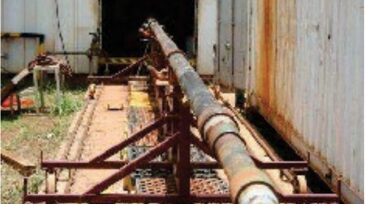Artificial lift
Three case studies consider the gas-related reasons electrical submersible pumps fail in unconventional shale environments.
Whether it’s reviving inactive gas-condensate wells or identifying overlooked reserves in brownfields, operators are making the most of older wells and fields.
Sponsored
Electrical submersible pumps (ESPs) are the backbone of artificial lift operations, enabling the extraction of hydrocarbons from challenging reservoirs. However, their effectiveness is often compromised by the extreme downhole environment, characterized by soaring temperatures, high pressures, and exposure to aggressive fluids.
-
This paper describes the use of a root-cause-failure-analysis (RCFA) process to improve artificial-lift-system performance in a project in Chad.
-
The digital repository of our valuable SPE papers was first launched as the SPE eLibrary in 1997 and subsequently was updated as OnePetro in 2007. This great collection has become a valuable resource for our global industry.
-
As oil and gas fields are depleted, artificial lift systems are often required to maintain delivery volumes and to maximize recovery.
-
Different artificial lift technologies have been used for decades to dewater coalbed methane (CBM) wells to reduce hydrostatic pressure and release the gas for production.
-
The rapid growth of progressing cavity pumps is an example of how new uses continue to emerge for older technology.
-
High-reliability gas lift flow-control devices (GLFCDs) enable gas lift for wells with the potential for H2S in the produced gas and where casing is not qualified for H2S service.
-
Artificial-lift reliability is strongly influenced by how well the equipment is selected, designed, and operated for its particular application. The required artificial-lift knowledge is more than simply entering data into a software program or taking one class on the subject.
-
Recently, Quicksilver Resources and Eni E&P, through its subsidiary Eni US Operating, began a common effort to optimize production and lift costs in the Alliance shale-gas field in the prolific Barnett shale play in Texas.
-
Fall velocities for various plungers have been measured under many different field and simulator conditions. A new theoretical plunger-fall-velocity model uses a specific pressure and temperature for calibration.
-
Artificial lift systems arae among the most widely used production technologies in global oil and gas operations.












